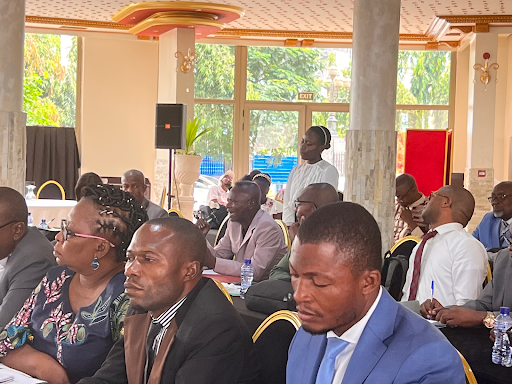Better Total Resource Management Using AMP Data in Nepal’s Budget System
Staff in Nepal’s Ministry of Finance now has even more effective tools for budgeting and planning, thanks to a new link between their Aid Management Platform and the national budget system designed around the International Aid Transparency Initiative (IATI) standard.
Previously, Development Gateway (DG) conducted an in-country systems integration assessment to explore the possibility of integrating the Aid Management Platform (AMP), the Government’s Budget Management Information System (BMIS), and its Financial Management Information System (FMIS). The assessment mission was aimed at exploring the benefits, feasibility, and technical options for such a link. All three systems carry out complementary roles in the management of public funds and are fundamental for promoting accountability in their use.
The assessment found that accurate information on Development Partner projections was missing in the annual budget preparation process. The Development Partners also had no clear picture on how the funds they contributed to Nepal’s annual budget were spent. Since foreign assistance accounts for over a quarter of Nepal’s national budget, this information is critical for the budgeting process.
In April 2013, DG launched an automated information transfer between the AMP (based in the International Economic Cooperation and Coordination Division) and the Budget Management Information System (based in the Budget Division) using the IATI Exchange software program. This pioneering system integration makes all of AMP’s data on planned development partner disbursements and actual disbursements directly available for the BMIS.
Previously, budget staff had to solicit this information piecemeal from other areas of the Ministry, resulting in inaccurate budget estimates around foreign assistance. Now budget staff can access foreign assistance data in their desktop information system, resulting in faster, more accurate budgeting and better allocations of Nepal’s own national resources.
The next phases of the project will focus on the budget execution process where information on government expenditures will be imported from the Financial Management Information system to the AMP. Development Partners and the Government of Nepal will then have a complete picture of government expenditure for projects that are donor-funded and those that are co-financed by the government and donors.
This important milestone in AMP’s history provides a good example for other countries in similar situations. The information in AMP is powerful; connecting AMP data with other information only increases its usefulness for constituent governments.
Share This Post
Related from our library

Beyond Kigali: Where Does Africa Go from Here with AI?
As governments, funders, entrepreneurs, and technology leaders rally around the AI moment and move towards actions, at Development Gateway, we are asking a different set of questions: Where is the data, and what is the quality of the data behind the algorithms? How will legacy government systems feed AI tools with fresh and usable data? Are Government ministries resourced to govern and trust the AI tools that they are being encouraged to adopt?

How useful is AI for development? Three things we learned from conversations with development experts
The development world is buzzing with excitement over the idea that new and emerging applications of artificial intelligence (AI) can supercharge economic growth, accelerate climate change mitigation, improve healthcare in rural areas, reduce inequalities, and more. But what does this look like in real life?

Stakeholder, Where Art Thou?: Three Insights on Using Governance Structures to Foster Stakeholder Engagement
Through our Tobacco Control Data Initiative (TCDI) program and its sister program Data on Youth and Tobacco in Africa (DaYTA), we have learned that creating governance structures, such as advisory boards or steering committees, is one approach to ensuring that digital solutions appropriately meet stakeholders’ needs and foster future stakeholder engagement. In this blog, we explore three insights on how governance structures can advance buy-in with individual stakeholders while connecting them to one another.